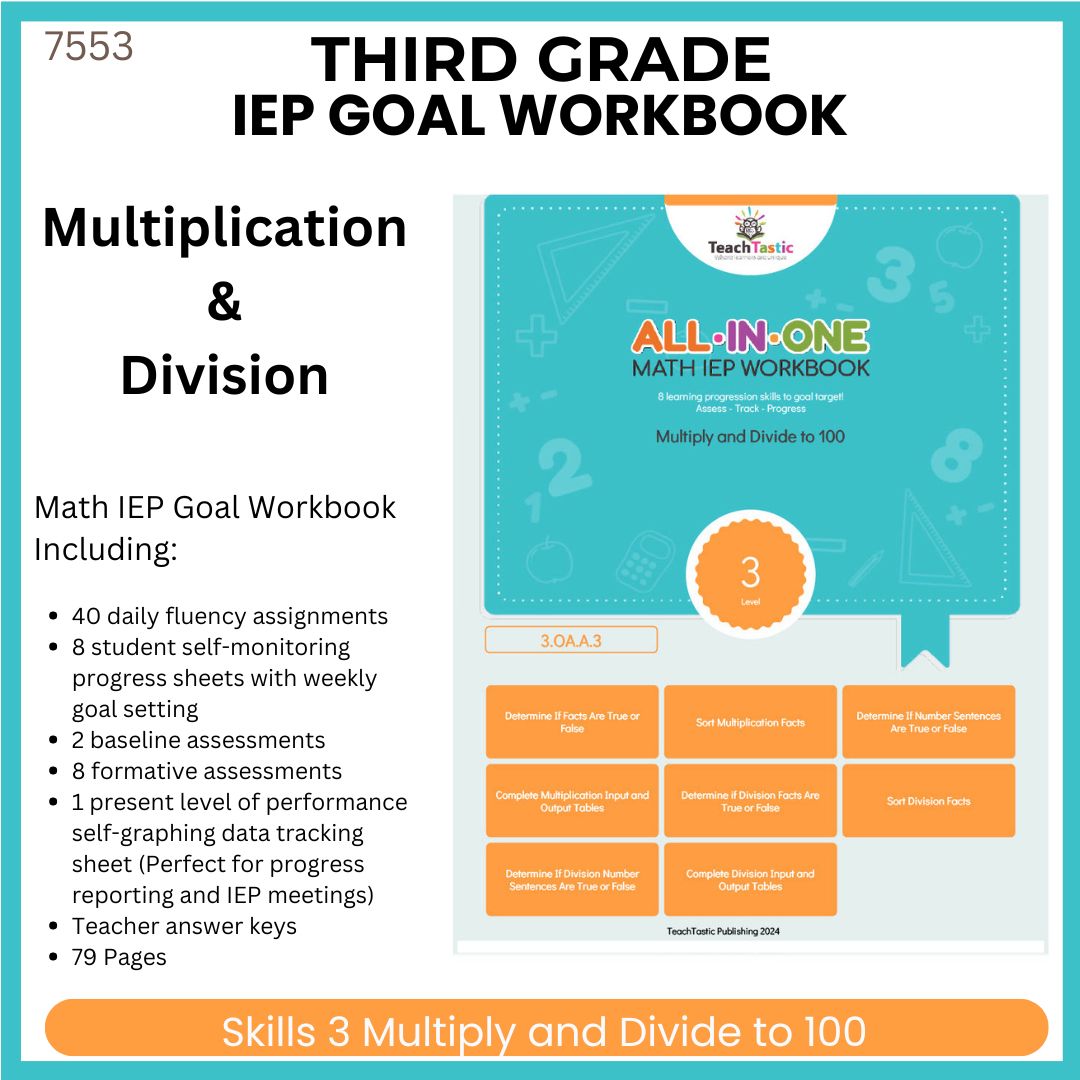Lesson Plan Template
-
Grade
-
Subject
-
Section
Third
Math
-
Competency
Multiplication fluency up to 10
-
Aligned Standards
Operations and Algebraic Thinking
-
Strand
3.OA.A.3
-
Vocabulary
Product: The result of multiplying two numbers.
Compare: To evaluate the difference or similarity between two numbers.
Benchmark: A reference point or standard, such as the number 50 in this lesson.
Fact Sorter
Sort Multiplication Facts
Prerequisite Skill
Materials and Preparation
- Whiteboard and markers
- TeachTastic Worksheet Pack for Sorting Multiplication Facts
- Large number cards labeled "Less than 50," "Equal to 50," and "Greater than 50"
- Multiplication flashcards
- Scissors and glue sticks (for sorting activity)
Learning Objectives
- Students will multiply two numbers to find the product.
- Students will compare the product of multiplication expressions to a benchmark number (50).
- Students will sort multiplication expressions into categories based on whether the product is less than 50, equal to 50, or greater than 50.
Introduction
Begin the lesson by reviewing basic multiplication facts with the students. Discuss how multiplication can be used to determine the total of groups of the same size. Introduce the concept of comparing numbers by using a number line, and explain how today they will be comparing the results of multiplication to the number 50. Use simple examples like 5 X 105 to show how to determine if a product is less than, equal to, or greater than 50.
Explicit Instruction/Teacher modeling
Display three expressions on the board: 6 X 76, 5 X 10, and 9X 6. Solve each one step by step, writing out the multiplication and then comparing the result to 50. For example, 6 X 7 = 42, which is less than 50. Explain that when comparing products, you are determining how they relate to a benchmark (50). Use the large number cards to place each expression in the appropriate category.
Guided Practice
Hand out the TeachTastic Worksheet Pack for Sorting Multiplication Facts. Work through a few problems as a class. Encourage students to first multiply the numbers, write the product, and then compare it to 50. Ask them to place each product in the appropriate category on their worksheet: less than 50, equal to 50, or greater than 50. Use the large number cards on the board to visually categorize the expressions as you go along.
Independent Practice
Students will complete the remaining problems in the TeachTastic Worksheet Pack independently. They will multiply, compare, and sort the expressions into the correct categories. Encourage them to double-check their work by repeating the multiplication before comparing the product to 50.
Differentiation
Support
- Offer additional practice with multiplication flashcards for students who need reinforcement of their multiplication facts.
- Provide visual aids, such as a number line, to help students better understand comparison.
- Pair struggling students with a peer tutor who can guide them through the multiplication and comparison process.
Extension
- Challenge students to create their own set of multiplication problems and sort them into the three categories.
- Introduce more complex multiplication problems involving larger numbers to students who are ready for an additional challenge.
- Explore how other benchmarks (e.g., 100 or 25) can be used for comparison and sorting activities.
Assessment
Use the completed worksheets from the TeachTastic Worksheet Pack to assess students’ understanding. Check that they correctly solved the multiplication problems and placed the products in the correct categories. Review their exit tickets to ensure they grasp the concept of comparing and sorting products.
Review and closing
Summarize the key points of the lesson by revisiting the concept of comparing products to a benchmark number. Discuss how this skill can be useful in real-life situations, such as comparing prices, distances, or quantities. Allow students to ask any remaining questions and clarify any confusion.
Misconceptions
- Misconception: Students may think that larger multiplication numbers always result in a product greater than 50. Correction: Emphasize the importance of performing the multiplication before making a comparison.
- Misconception: Students might confuse the equality sign with the comparison being made. Correction: Reinforce the difference between comparing numbers and checking for equality.
- Misconception: Students might assume that all products must fit neatly into the categories without solving the problem first. Correction: Stress the importance of solving the multiplication before making any assumptions.


